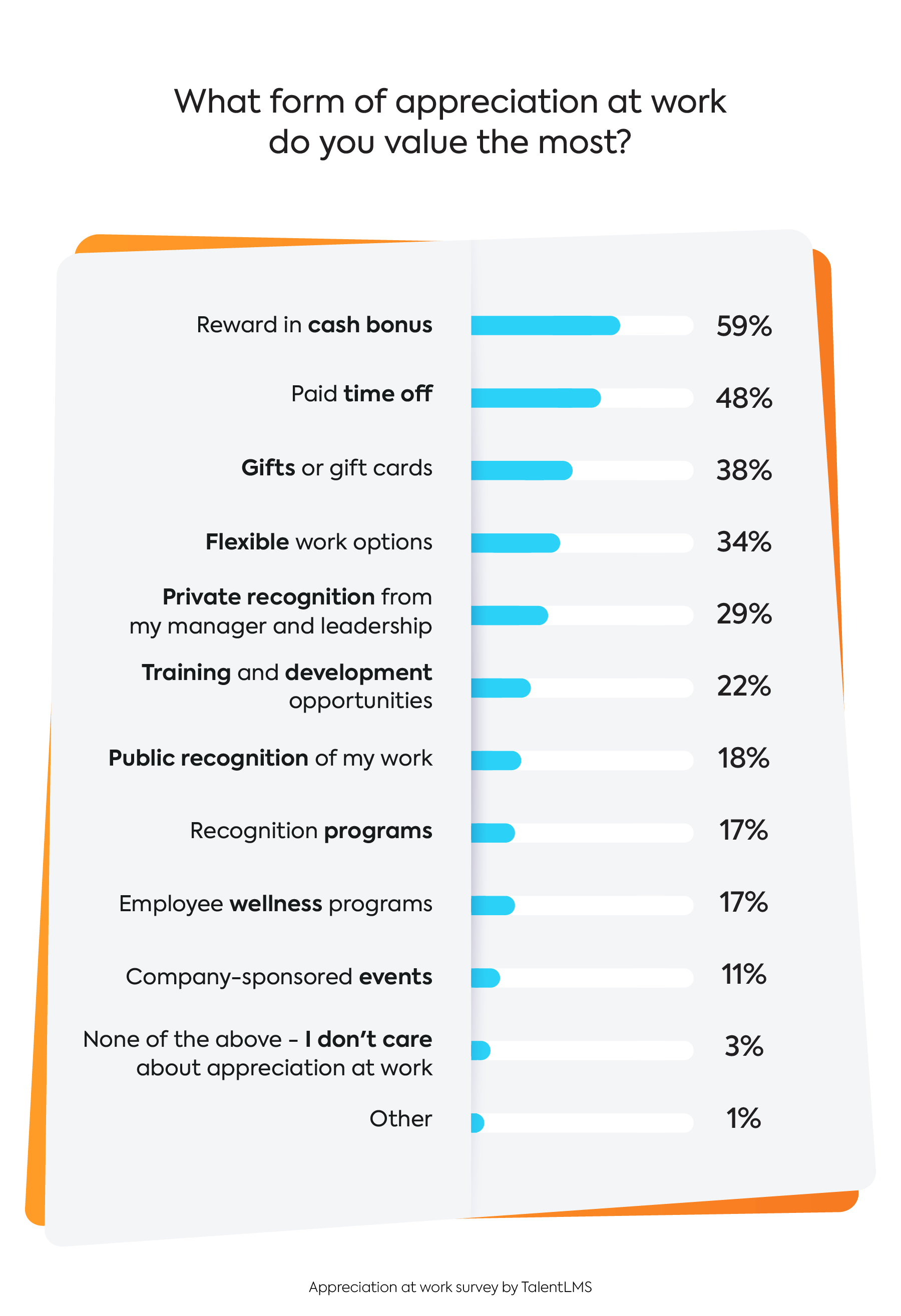Did you know that your company’s most expensive mistake might be ignoring the warning signs of an employee resigning?
In the business world, this is called employee turnover.
In fact, according to a 2019 Gallup survey, replacing an employee can cost up to twice their annual salary.
That’s a huge chunk of change that could be invested in, well, almost anything else. Think new equipment, exciting projects, or even a company-wide team-building activity.
But here’s the kicker: the true cost of employee retention goes far beyond those dollar signs. When someone leaves, projects stall, deadlines get pushed, and everyone else has to pick up the slack.
All in all, it leads to stressed-out employees, a dip in morale, and a whole lot of wasted time and energy.
This blog post will answer the nagging question: Why do employees leave their jobs? We’ll explore the 11 key reasons why people quit their jobs, preventative strategies and warning signs to help you boost employee retention.
What is the most common reason people leave their jobs?
You might have heard the old adage, “People don’t leave jobs, they leave managers.”
While there’s certainly some truth to that, it’s not the whole picture. A recent Gallup survey shed light on the top reasons employees quit. And surprise, surprise, it’s not just about the managers.
The top three culprits, according to the survey, are:
- Employee engagement and culture
- Employee wellbeing and work-life balance
- Pay and benefits
However, as any seasoned HR professional or business leader knows, there are a lot more reasons why employees quit.
11 top reasons employees leave their jobs & how to prevent it
While the reasons for leaving may resonate differently with each person, it’s important to understand that most of the time, there’s no single universal trigger.
Sadly, that means there’s also no universal cure.
The good news? Most of these reasons have a corresponding cure in the form of a preventive measure you can take to keep your employees engaged, happy, and, most importantly, staying.
1. Lack of work-life balance
Have you ever seen a top performer, once brimming with enthusiasm, turn into a shadow of their former self? They’re missing deadlines, their productivity’s down, and their spark has faded.
It’s a classic case of burnout fueled by a chronic lack of work-life balance. What’s worse is they will eventually crash and burn and start to question if this is the right company for them.
Preventive actions to take:
- Offer remote work options, flexible hours, or compressed workweeks to people with heavy workloads.
- Create a culture where taking vacation and sick leave is accepted, not frowned upon.
- Set clear guidelines for after-hours communication.
- Implement wellness programs to help employees thrive personally and professionally.
2. Lack of recognition and appreciation
When employees pour their heart and soul into a project, only to have it met with crickets, it can be very demoralizing. These types of experiences can leave even the most dedicated employees feeling undervalued and overlooked.
It’s not long after that until your employee satisfaction rates are down, and they start to look elsewhere.
Preventive actions to take:
- Make recognition and appreciation a core part of your company’s DNA.
- Go beyond generic compliments. Give specific, meaningful feedback.
- Put in action a few employee appreciation ideas.
TalentLMS’s survey on employee appreciation gives more insight into workplace recognition, plus showcases forms of appreciation employees value the most.
3. Lack of training
Training does more than help employees learn new skills and boost your bottom line. It also helps to motivate and keep your employees around. However, a lack of training options can leave employees feeling stagnant and often lead them to look for better options.
Modern-day employees are very aware of how skill demands can change. They likely want to work with companies that mirror that understanding and put in place drivers to help employees stay sharp and relevant through training efforts.
Preventive actions to take:
- Invest in employee training software that centralizes, standardizes, and monitors all your training efforts.
- Pair inexperienced employees with experienced colleagues for mentorship opportunities.
- Make continuous learning and development a core part of your company’s strategic planning.
4. Poor workplace culture
If your employees are walking into work every day, dreading the negativity, gossip, and lack of support, then you probably don’t have a healthy company culture.
A toxic work environment can erode morale, stifle creativity, and breed resentment, ultimately leading to low employee retention rates.
Preventive actions to take:
- Set up Open Door Policy 2.0. — Make sure your employees feel comfortable coming to you with concerns, no matter how big or small.
- Encourage collaboration and mutual respect, which you can nurture using social and collaborative learning.
- Champion diversity.
5. Lack of growth opportunities
Training and growth are often mixed up. Training helps people reskill and upskill, whereas growth is something that happens when someone becomes better at certain aspects of life.
Growth might happen because of training, career opportunities, or professional development plans. But it’s not directly attached to any of these things.
In other words, it is something many employees look for beyond just training. Think of a high-performing employee who’s mastered their current role, but there’s no clear path to career advancement. Sure, you offer training programs to keep their skills sharp, but what they crave is a chance to step up, take on new responsibilities, or climb the career ladder.
Without growth opportunities, they feel stuck, unchallenged, and ultimately unfulfilled.
Preventive action to take:
- Create clear career paths and employee development plans, showing employees how they can progress and reach their full potential.
- Pair high-potential employees with senior leaders who can guide, advise, and champion their career growth—this also boosts your internal mobility.
6. Inadequate compensation
Whenever an employee feels their compensation doesn’t reflect their skills, experience, or the market value of their role, it could cause big problems.
Sure, money isn’t everything, but it’s a tangible measure of how much a company values its employees. If your paychecks don’t show that you value your employees, don’t be surprised when your top talent starts going elsewhere.
Preventive actions to take:
- Regularly check in on industry standards and compare them to your pay scales to stay competitive.
- Be upfront about your compensation philosophy and your organization’s values.
- Reward top performers with bonuses, raises, or a slice of the profit pie.
7. Poor management
Think back to a time when you had a terrible boss. The micromanagement, the lack of communication, the favoritism… It probably made you dread going to work each day?
Well, your employees feel the same way when they have to deal with poor management.
They probably feel undervalued, unsupported, and unsure of their role within the team. And guess what? They likely will start looking for greener pastures.
Preventive actions to take:
- Don’t just promote people into management positions—equip them with the skills they need to succeed beforehand. Leadership training that focuses on effective communication, delegation, conflict resolution, and performance management can help them be better company leaders.
- Create a company culture of reverse feedback, where team members give regular, constructive feedback to their managers.
8. Other good employees have left
Often, when good employees leave, others might follow their example.
This is because coworkers leaving can cause uncertainty for those staying. “If they left, maybe I should too,” starts to echo in the hallways, making them question their own job satisfaction. It’s a contagious phenomenon that can quickly snowball into a full-fledged talent exodus.
Preventive actions to take:
- Conduct thorough exit interviews to uncover underlying issues and address them proactively.
- Maintain relationships with alumni. You never know when a boomerang employee might return with fresh perspectives and valuable experience.
- Celebrate the achievements of current employees and share their stories internally and externally.
9. Feeling disrespected
Suppose that you were working hard, giving your best, only to be constantly belittled, ignored, or treated unfairly.
It’s very disrespectful, and it can erode your self-worth and chip away at your motivation and mental health.
This behavior and the feeling they get typically causes employees to search for a more respectful work environment elsewhere.
Preventive actions to take:
- Establish clear policies against harassment, bullying, and discrimination. Enforce these policies consistently and fairly.
- Make it easy for employees to talk about their worries or report things that are disrespectful.
- Managers should model respectful behavior in their interactions with employees. Remember, actions speak louder than words.
10. Routine work
If an employee is clocking in each day, only to face the same tasks, the same routines, and the same predictable outcomes,it’s no wonder they start to feel like a cog in a machine.
The thrill of the new quickly fades, replaced by a sense of stagnation and boredom. Routine work, while necessary, can be a creativity killer, leaving employees feeling unchallenged and uninspired. It could even affect their mental health.
Preventive actions to take:
- Introduce job rotation or cross-training opportunities to give employees a chance to explore different roles and skills.
- Encourage employees to pursue special projects or initiatives that align with their interests and passions.
- Inject some fun and excitement into routine tasks with challenges, rewards, or a bit of friendly competition.
11. Corporate culture no longer fits
Many growing organizations have a hard time maintaining the key culture that they were known for when the company was still fairly new.
As a company grows, things change, and for some employees, what once felt like a comfortable pair of jeans now feels completely alien. The values, the vibe, the very essence of the workplace have transformed, leaving some employees feeling out of sync and out of place.
Preventive actions to take:
- When change is in the air, be upfront and transparent with your employees.
- Create opportunities for employees to share their thoughts on the culture through regular feedback.

Signs an employee is about to quit
While you can’t always predict when an employee is ready to jump ship, there are often telltale signs that something’s amiss. Being aware of these signs can help you anticipate a resignation before it lands on your desk.
A few red flags to watch out for:
Decreased productivity
Deadlines are missed, projects stall, and the overall quality of work goes downhill.
A major event in their personal life
Big changes like family obligations, sickness, or other personal reasons can sometimes trigger a career change as well.
Increased LinkedIn activity
A sudden surge in LinkedIn activity, particularly updating their profile or connecting with recruiters, could signal a job search in progress.
Contributing less socially
They participate less during meetings, avoid social work gatherings, and generally seem withdrawn from the team.
Taking more time off than usual
A sudden increase in sick days or personal time off could suggest they’re using that time for job interviews.
Uninterested in promotions or advancements
They show little interest in promotions, new opportunities, or professional development as they already don’t see themselves as part of the company for a long time.
Unrealistic requests
Demands for a big raise or changes to their role that are out of line with company policy could be a sign they’re testing the waters.
Blowing through personal time
Using up all their vacation time quickly might indicate they’re trying to use it before resigning.
Change in behavior
If someone starts keeping to themselves more, getting easily annoyed, or feeling frustrated, it could be a sign that they’re not happy at work.
What you need to keep in mind is that just like when a doctor diagnoses a patient, you’ll likely need to pay attention to more than one of these signs. A solo sign, like a sudden drop in socializing, could indicate more personal problems than a sign of quitting work.
However, when they start to show a few signs at once or gradually, like lower productivity and a lack of interest in advancement, then you probably have someone who isn’t keen to stay around anymore.
Bonus tips: How to keep employees from leaving
Instead of just asking why do people quit their jobs, you’ll want to be proactive and act on the warning signs. Acting upon them is where you can step in and try to keep them from leaving.
If you notice an employee exhibiting several red flags, don’t hesitate to have an open and honest conversation. Uncover the root cause of their discontent and explore possible solutions together.
You can also regularly gather feedback from all employees, not just those showing signs of leaving. Conduct surveys and hold focus groups to identify pain points and areas for improvement. Try to use these to create a better workplace.
Additionally, invest in employee retention strategies that address the most important reasons we’ve discussed: healthy work-life balance, recognition, growth opportunities, fair compensation, positive culture, and effective management.
You don’t have to tackle each employee retention strategy at once. Start with the top reasons for low employee retention in your company or industry and gradually work your way through the list, allocating your time and resources as you go.
And remember to be upfront with your employees about what you can and can’t do. Share your action plan based on their feedback and keep them updated on your progress. Being honest and transparent helps to build trust and shows that you are committed to their well-being.
The ever-turning wheel
At the end of the day, employee turnover is a fact of life.
Sometimes, even after you try to understand “why do employees leave their jobs” an employee will still leave. Maybe they’ve found a dream role elsewhere, better benefits, or perhaps they’re seeking a completely different path in life. A counter-offer might delay the inevitable, but it won’t always solve the underlying reasons for their departure.
That being said, don’t throw your hands up in resignation (pun intended!).
While you can’t eliminate turnover entirely, you can significantly reduce it by creating a company culture where employees feel valued, supported, and inspired to grow.
| Tags: Employee Engagement





